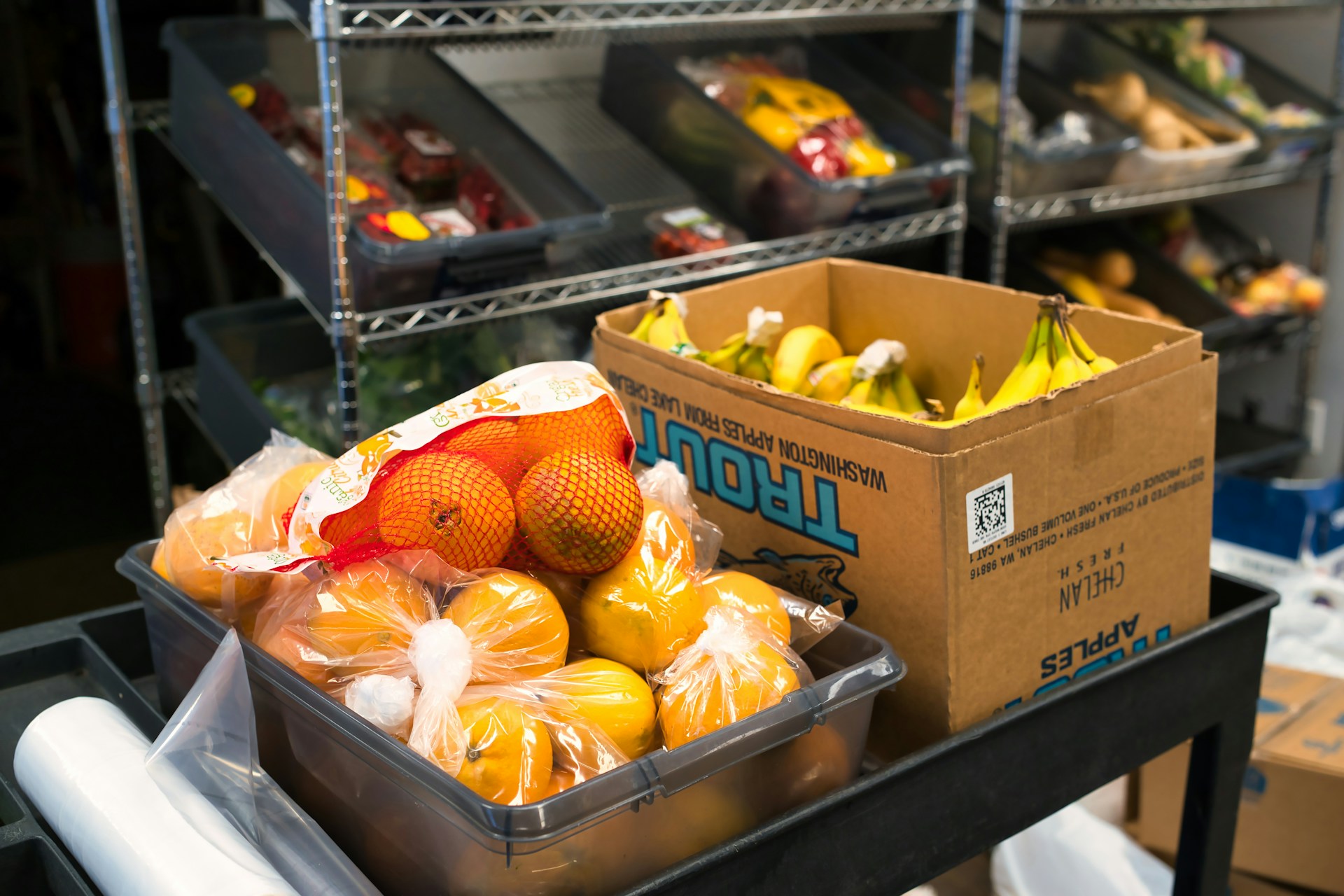Efficient order management in the world of produce retail can significantly streamline operations, balance inventory, and improve customer satisfaction.
Yet, many retailers still struggle with these tasks due to their complexity.
This is why we bring you some practical and actionable tips to enhance your order management system.
Delving into this subject, we will explore ways to avoid wastage, improve sales, and become more profitable.
For produce retailers, yielding positive results often boils down to accurate order management and inventory control.
Let’s examine the strategies that can help optimize these core business operations.
Contents
- Order Management Tips For Produce Retail Inventory
- 1. Utilize Modern Inventory Management Software
- 2. Implement first-in, first-out (FIFO) system
- 3. Regularly Perform Physical Inventory Checks
- 4. Prioritize perishables for quick turnover.
- 5. Train Staff for Accurate Inventory Management
- 6. Monitor seasonal demand and adjust accordingly
- 7. Maintain clear communication with suppliers.
- The Bottom Line
Order Management Tips For Produce Retail Inventory
1. Utilize Modern Inventory Management Software
In today’s retail industry, the proper management of inventory is crucial.
This rings particularly true in the case of produce retailers, where the rapid rate of perishability demands superior attention and efficiency to inventory management.
To handle this issue, one must utilize modern inventory management software.
The importance of such software is unquestionable, having surpassed traditional manual inventory systems in terms of efficiency, accuracy, and convenience.
The use of modern inventory management software aids in maintaining a balanced stock of goods, helping prevent both wastage and stock-outs, both of which are of paramount significance in produce retail.
A modern inventory management system also helps in achieving real-time inventory tracking and management, enabling an immediate response to any changes or discrepancies in the inventory.
These systems also allow produce retailers to seamlessly integrate with ordering and sales systems, ensuring the smooth flow of data and improved accuracy in order forecasts.
Furthermore, the software also offers automated inventory updates, removing the risk of human error and raising the overall efficiency of the operations.
The advanced features available in these software applications also support produce retailers in making informed decisions based on data analytics and reporting.
They help in detecting patterns, trends and understanding customer behaviors which can be leveraged for effective inventory planning.
It’s also critical to remember that the success of utilizing modern inventory management software falls significantly on the ability of the personnel to use the system efficiently.
Regular training to enhance staff familiarity with the software can facilitate smooth operation and maximum utilization of the system.
The adoption of modern inventory management software in retail operations of produce may necessitate a substantial upfront investment.
However, the long-term returns in terms of improved efficiency, reduced wastage, increased sales, and ultimately, higher profits will justify this investment.
Therefore, employing modern inventory management software must be a priority for every produce retailer aspiring to optimize his order management system.
2. Implement first-in, first-out (FIFO) system
In the realm of produce retail inventory management, it’s essential to understand the fundamentals of the first-in, first-out (FIFO) system.
Stated simply, the FIFO system operates under the principle that the first items to be stocked are the first items to be sold.
The essence of this inventory management method lies in its focus on product freshness.
As a retailer of perishable goods, it’s crucial to ensure that your customers are always receiving the freshest produce possible, and the FIFO system is instrumental in achieving this aim.
One way to achieve this is by properly organizing your stocks so that oldest items are front and center, encouraging them to be the first picked up by customers.
Applying the FIFO system in this way helps maintain the integrity of your inventory and ensures that no item gets overlooked or lost in the shuffle
However, implementing the FIFO system isn’t just about organizing shelves or stacks of produce. It involves a complex process of inventory tracking, control, and management.
It means tracking the in-flow and out-flow of each product, accurately noting down their respective timestamps, and subsequently arranging them based on these timestamps.
On a practical level, it involves regularly checking the freshness of your products, and removing any items that are close to expiration and replacing them with fresher ones.
The FIFO method also entails a level of predictability, enabling you to forecast future sales based on past sales trends.
By recognizing the rhythm and pace at which specific items move, you can make informed decisions about how much to order and when.
Moreover, this approach helps minimize waste due to spoilage or overstock, thereby significantly reducing inventory-related losses and increasing profit margins.
Efficient utilization of space is another advantage of applying the FIFO system, as older stocks are cleared faster, making room for new inventory.
Implementing this system is, however, not a one-time task but an ongoing process that requires diligence and attention to detail.
But with the right level of commitment and regular monitoring, the FIFO method can prove to be a boon to your retail business, guiding it towards optimal inventory handling and control.
In the end, the primary aim of the FIFO system is to assure the freshest produce to your customers, which directly translates into better customer satisfaction and repeat business.
3. Regularly Perform Physical Inventory Checks
A vital aspect of managing produce retail inventory is to regularly perform physical inventory checks.
Even with the best inventory management software, the reality on the ground could differ which makes physical checks indispensable.
Physical checks help to identify discrepancies that might exist between the inventory software data and the produce available on the shelves and in the storeroom.
Regular physical inventory checks keep the produce retail business up-to-date with the state of supplies and reduces the possibility of running out of stock unexpectedly.
Human errors, pilferage, or simple mistakes in data entry can lead to inconsistencies, making regular checks crucial for accurate inventory management.
Produce, unlike other retail items, is quite susceptible to spoilage, further emphasizing the need for physical inventory checks.
Rot, decay, or simple quality reduction can lead to a decrease in the expected shelf life of the products, influencing turnover rates and the need for restocking.
In performing these checks, a systematic approach should be adopted to ensure consistency and reliability of the process.
This could entail numbering shelves or adopting a grid system to ensure that each section of the inventory is assessed systematically.
With accurate physical checks, you are also able to better plan for seasonal demands or notice trends and patterns in consumption that might have otherwise been overlooked.
Regular physical inventory checks also allow for adjustments in order to meet demand, avoiding produce waste and optimizing profitability.
Two important approaches that businesses can consider adopting are the cycle count method and the wall-to-wall count method.
The cycle count method involves checking a specified section of inventory regularly throughout the financial period while the wall-to-wall count implies checking the entire inventory at once, usually at the end of the financial period.
Ultimately, whatever method you choose, the key is to make sure your physical check aligns with your inventory management system and provides an accurate picture of your produce retail inventory.
4. Prioritize perishables for quick turnover.
To optimize inventory management in the produce retail business, one essential strategy is to prioritize perishables for quick turnover.
The nature of the items you carry in a produce retail store is unlike any other, with a large chunk of the inventory being highly perishable.
This necessitates an elevated degree of urgency in their handling, with a keen focus on maximizing their turnover rate.
When perishables are prioritized, it directly translates to fresher offerings for your customers and a significant reduction in spoilage and waste.
It’s important to develop a systematic approach to prioritize these perishables.
This could mean dedicating specific areas of the store to their display, ensuring that customers notice and are drawn to them first.
Frequent restocking is also an effectual strategy, as it not only ensures the freshness of the offerings but also creates an impression of abundance and variety for the customers.
Through prioritizing perishables, retail stores can enhance the quality of goods offered and also positively impact cost efficiency by reducing waste and spoilage.
Another practical approach is to leverage data provided by your inventory management software to understand the buying patterns and preferences of your customers.
Combining this data with insights into seasonal demand can enable you to stock up on those perishables that are more likely to be purchased fast, providing an opportunity for quick turnover.
Pricing strategies can also be effectively tweaked to favor the sales of perishables.
Discount schemes, bulk bargaining deals or special promotional offers for perishables can act as effective motivators for customers to choose these items over the non-perishables.
The practice of pricing perishables low during the peak freshness times, and discounting them as they near their sell-by dates, can also aid in quick turnover.
This strategy, though appearing to reduce profit margins, can actually improve overall profitability by reducing losses from spoiled goods.
A key success factor lies in training your staff adequately in these principles and practices.
Implementing a culture of urgency and nimbleness in handling perishable goods will help to optimize their turnover.
Finally, maintaining clear and effective communication with suppliers concerning the delivery and restocking of perishables is essential to ensure that these items are always fresh and abundant in the store.
5. Train Staff for Accurate Inventory Management
One of the core order management tips for produce retail inventory is the crucial role played by the training of staff for accurate inventory management.
This implies that the efficiency of your inventory management is significantly influenced by the level of competence and knowledge your team has about it.
Therefore, investing in quality training programs targeted at enhancing your staff’s understanding and skills revolving around inventory management is highly beneficial.
Such training should focus on providing knowledge about performing accurate product counts, updating the inventory records promptly, and handling the inventory management software adeptly.
Moreover, the staff should be well-versed about the FIFO system and how to apply it appropriately in the business.
Understanding the shelf lives and shelf order of various produce is an essential aspect that the training should encapsulate to ensure the quick turnover of perishables.
Investing in workforce training strengthens not only your team’s technical inventory management skills but fosters an organizational culture that values precision, organization, and proactive management.
Furthermore, well-informed staff can contribute to automating the inventory management processes, reducing errors, and optimizing operations.
Accurate inventory management leads to better order fulfillment, thus improving the customer shopping experience and boosting your business’s reputation.
Staff training can also enrich employees’ understanding of seasonal demand changes, enabling your business to adjust strategies accordingly, preventing wastage, and heightening profits.
It promotes clear communication between management, staff, and suppliers, ensuring all are on the same page regarding inventory needs and adjustments.
Regular refresher courses are also imperative to keep the staff updated on the latest inventory management practices and technological advancements.
Essentially, training your staff for accurate inventory management is like equipping your business with a powerful tool to streamline operations, reduce waste, and increase profitability.
The benefits reaped from this investment in training typically outweigh the costs associated, adding a significant value to your business.
Without a doubt, the cornerstone of an effective inventory management system is competent personnel who are efficiently trained and reputable in handling the ins and outs of the assigned roles and tasks effectively.
So, consider this as a call to action for all produce retail businesses intending to enhance their order management.
Invest in staff training, hone their skills, and build a robust accurate inventory management system that is certain to support and escalate the growth of your business.
6. Monitor seasonal demand and adjust accordingly
The ability to effectively monitor seasonal demand is a critical aspect of order management in produce inventory.
Knowing full well that produce is seasonal and varies throughout the year is vital if you’re aiming for efficient and optimized inventory management.
The clear understanding of what produce is in demand during each season will help you make informed decisions about what to stock and when.
Should you stock up on strawberries in winter or wait for summer? These kinds of decisions hugely impact your inventory management.
By watching for patterns in the demand for different produce at various times of the year, you can forecast future demands and adjust your orders accordingly.
If an item is in high demand during a particular season, it would make sense to order more of that product during that period, thereby avoiding perishable items staying on the shelf for too long.
This practice is not only efficient but also aids in minimizing waste and maximizing profits.
Remember, overstocking your inventory can have its own negative side. It may lead to excessive waste if much of the produce goes bad before it can be sold.
When you effectively balance your inventory according to seasonality, you can avoid this pitfall and improve turnover.
Monitoring seasonal demand and adjusting orders accordingly not only helps improve inventory management but also leads to better customer satisfaction.
Customers can easily find the products they are looking for, and the freshness and quality of the produce are ensured.
Additionally, inventory adjustments based on seasonal demand can help create a more sustainable business model as it minimizes waste.
Even though this requires a higher degree of monitoring and responsiveness, the benefits are well worth the effort.
After all, an inventory filled with unsold, rotting produce does not benefit anyone – especially not a produce retail business aiming for success.
Therefore, you should commit to monitoring seasonal demand and making necessary adjustments to your orders based on the findings to ensure improved inventory management and satisfied customers.
7. Maintain clear communication with suppliers.
For efficient order management in a produce retail inventory, maintaining clear communication with suppliers is essential.
This facilitates a smoother workflow, ensuring goods arrive on time and in good condition.
Reliable suppliers are central in the supply chain, thus maintaining a strong relationship with them can sustain your retail business.
Maintaining clear communication with suppliers helps avoid potential misunderstandings that could lead to costly errors or delays.
Effective communication may include regularly updating suppliers about business needs and expected sales volumes.
Remember, your suppliers aren’t mind-readers, so keeping them informed about expected demand can help them meet your needs more accurately.
Being transparent about your capabilities and limitations can aid in setting realistic expectations.
Furthermore, it is important to stay open to their suggestions and comments, as they may have additional insights drawn from their experiences with other businesses.
It is equally important to clearly convey the quality and safety standards that the suppliers must meet.
Product specifications, delivery timelines, packaging requirements, and other important details should also be clearly communicated to avoid any confusion or misunderstandings later.
Regular feedback sessions can also enhance communication with suppliers, providing them opportunities for improvement.
In the case of any changes or updates in the requirements, suppliers should be promptly informed to allow them adequate time to adjust.
Retailers should also ensure that they are accessible and responsive to their suppliers’ queries or concerns, reinforcing trust and mutual respect in the partnership.
Having written agreements or contracts can also be beneficial in defining the expectations and conduct in the relationship.
In conclusion, maintaining clear communication with suppliers not only aids in efficient order management but also fortifies the vital relationship between retailers and suppliers.
The Bottom Line
Effective inventory management is undoubtedly crucial for business success and sustainability.
The utilization of modern inventory management software, implementation of a first-in-first-out system, and regular physical inventory checks are all integral for managing stock efficiently.
Prioritizing perishables for quick turnover and training staff for accurate inventory management further enhance the process.
Not to mention, monitoring seasonal demand and maintaining clear communication with suppliers is key to ensure a streamlined and flexible operation.
Every aspect of these strategies is interconnected and vital, embodying the old adage that the whole is truly greater than the sum of its parts.




